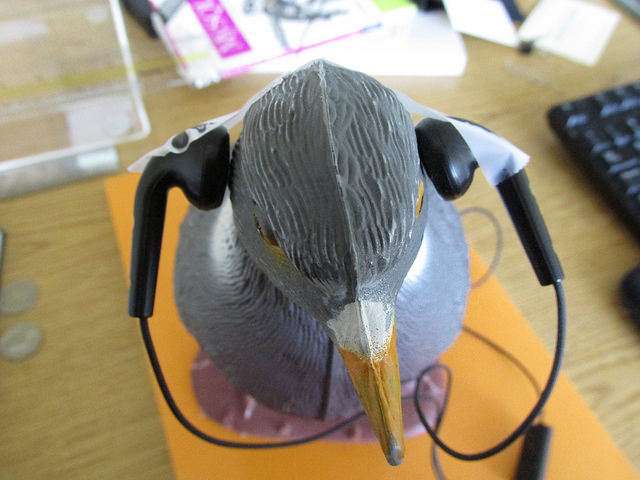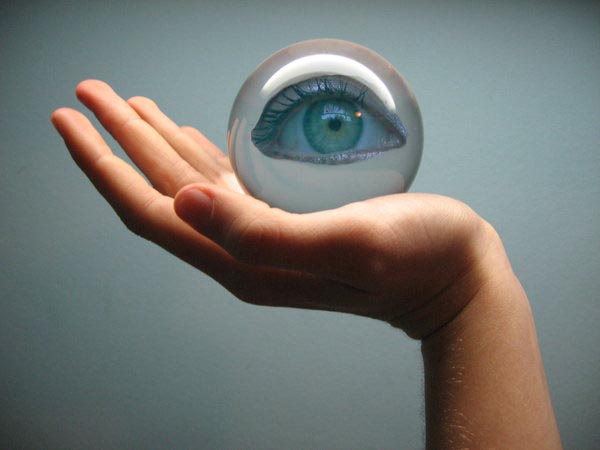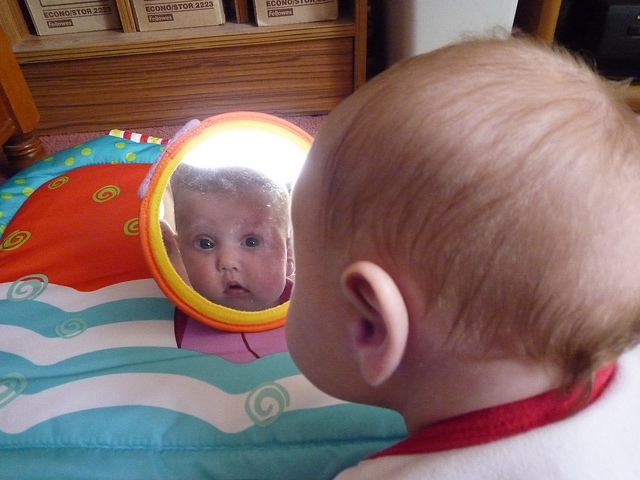Archive for the ‘Meaning’ Category
Scarcity and Abundance
 Supply and demand have been joined at the hip since the beginning. When demand is high, the deck is shuffled so supply seems low. The fabricated scarcity drives up prices and shareholders are happy. When demand is low, the competition pushes each other on price. The abundance creates a commodity, and it’s a race to the bottom.
Supply and demand have been joined at the hip since the beginning. When demand is high, the deck is shuffled so supply seems low. The fabricated scarcity drives up prices and shareholders are happy. When demand is low, the competition pushes each other on price. The abundance creates a commodity, and it’s a race to the bottom.
But this is old thinking.
Scarcity isn’t a lever to jack up prices or manipulate relationships, it’s an opportunity to spend your limited resources on the most important work and to build relationships. When you tell a potential partner you want work with them and you are willing to spend your finite resources to make it happen, it’s a huge compliment. Voting with your feet makes a powerful statement that you’re serious about working with them because you think they’re special. You are telling them that you will say no to others so you can say yes to them. Both know they’re part of something important and the free-flowing positivity results in something otherwise impossible.
Scarcity is limiting only if your mental framework thinks it is. If you hoard and hold tightly, scarcity breeds win-lose relationships governed by power dynamics. But if you choose the anti-framework, scarcity creates trust.
Played differently, abundance does not create commodity, it’s opportunity to show others you have enough to spare. In personal relationships, when you share some of your work for free your relationships blossom. When you give it away you are signaling that you have plenty to spare. It’s clear to everyone you are a geyser of new thinking. Here – take this. I’ll make more. These simple words create a foundation of trust which bolsters your personal brand. And because all business relationships are personal relationships, it does the same thing for your company’s brand.
Make it a commodity or give it away – how you see abundance is your choice. The old way breeds bare-knuckled competition. The new way creates a brand steeped in trust.
If you have scarcity, be thankful for it. Allocate your precious resources thoughtfully and with love. Spend your time with the people and causes that matter. It will feel good to everyone, including you. And if you have abundance, be thankful. Choose to develop closer relationships based on trust. Choose to give it away.
Happy Thanksgiving.
image credit — GloriaGarcia
Diversity Through Podcasts
 Podcasts are short bursts of learning curated to please your ear. And with training budgets slashed, podcasts can be a wonderful and cost effective (free) way to learn.
Podcasts are short bursts of learning curated to please your ear. And with training budgets slashed, podcasts can be a wonderful and cost effective (free) way to learn.
The only way to battle uncertainty is to increase diversity. Bringing together people with diverse experiences lets us see things from multiple perspectives so we can better navigate uncertain terrain. But increasing your personal diversity helps too. Giving yourself new knowledge from diverse fields helps you broaden your perspective and makes you better at handling the uncertainty that comes with life.
The hard part about podcasts is deciding which ones to listen to. In my work to increase my diversity, I’ve listened to a lot of podcasts. Some were interesting and inspiring and others weren’t.
Below are some of my favorite podcast episodes. There’s a short description of each one, along with what I learned from them. Click the link to take you to the episode and you can listen to each one. No need to download. Just find the play button and click it.
Enjoy.
9-Volt Nirvana (Radiolab) — I learned about how the brain works and how it can be supercharged (with a 9-volt battery) to learn faster. I listened to this one on a long car ride with my daughter. She doesn’t like podcasts, but she was captivated by this one.
The Living Room (Love and Radio) — A story about how things can look differently than they are, especially when looking from the outside. I learned how our assumptions and the stories we tell ourselves shape how we see the world. This one is emotionally gripping.
Guided by Voices (Benjamin Walker’s Theory of Everything) — How Kant and Kepler both tried (and failed) to record the universal harmonies Pythagoras once heard. They struggled to make peace with the irrationality and disharmony of nature. I learned disharmony is natural and to embrace it. There’s a segment in the middle that’s not about Kant and Kepler that you may want to skip. To skip that segment, listen from the beginning and at 9:30 skip to 23:07 and listen to the end.
Eckhart Tolle’s The Power of Now (On Being) — I love Eckhart’s voice and his chuckle. I learned how I am not my emotions; I am the space for my emotions. And I learned about the Pain Body. That, on its own, was worth it. Krista Tippett is a brilliant interviewer.
Belt Buckle (Mystery Show) — A story about a long-lost belt buckle and its journey home. I learned how we attach meaning to objects, and that can be a good thing.
The Wrath of the Khans 1 (Dan Carlin’s Hardcore History) — This is a riveting story of Genghis Khan. Dan Carlin is wonderful – he sits you right in the middle of history. (Listen for two minutes and you’ll feel it.) I learned the power of personal will and how history changes over time. To skip Dan’s wonderful introduction and get a feel for the Great Khan, start at 19:00 and listen for 10 minutes. If you like what you hear, keep listening. This podcast is long almost 2 hours and it’s the first of a series of five on the Great Khan. This is one of my most favorite favorites.
image credit — mpclemens
The People Business
Things don’t happen on their own, people make them happen.
With all the new communication technologies and collaboration platforms it’s easy to forget that what really matters is people. If people don’t trust each other, even the best collaboration platforms will fall flat, and if they don’t respect each other, they won’t communicate – even with the best technology.
Companies put stock in best practices like they’re the most important things, but they’re not. Because of this unnatural love affair, we’re blinded to the fact people are what make best practices best. People create them, people run them, and people improve them. Without people there can be no best practices, but on the flip-side, people can get along just fine without best practices. (That says something, doesn’t it?) Best practices are fine when processes are transactional, but few processes are 100% transactional to the core, and the most important processes are judgement-based. In a foot race between best practices and good judgement, I’ll take people and their judgment – every day.
Without a forcing function, there can be no progress, and people are the forcing function. To be clear, people aren’t the object of the forcing function, they are the forcing function. When people decide to commit to a cause, the cause becomes a reality. The new reality is a result – a result of people choosing for themselves to invest their emotional energy. People cannot be forced to apply their life force, they must choose for themselves. Even with today’s “accountable to outcomes” culture, the power of personal choice is still carries the day, though sometimes it’s forced underground. When pushed too hard, under the cover of best practice, people choose to work the rule until the clouds of accountability blow over.
When there’s something new to do, processes don’t do it – people do. When it’s time for some magical innovation, best practices don’t save the day – people do. Set the conditions for people to step up and they will; set the conditions for them to make a difference and they will. Use best practices if you must, but hold onto the fact that whatever business you’re in, you’re in the people business.
Image credit – Vicki & Chuck Rogers
Celebrating 5 Years of Writing
I have written a blog post every Wednesday evening for the last five years. No guest blogs, no ghost writer, no repeat blogs, and no editor. Just me.
The main theme last year was around doing new. Though I used the word innovation too many times, I provided real examples and grounded observations on what to do and why. There are many tools, processes, and philosophies around innovation – too many to cover fully even over a year or two of blogs – but there are two things that apply to all of us.
Innovation is context specific. Whatever you do going forward is strongly shaped by what you did to make the present what it is. And because every company’s history is different, every company’s go-forward activities will be different. Yes, become knowledgeable about best practices, but use only the ones that fit and don’t use them as-is – twist them to match the curves of your company. Yes, understand what other companies have done, but don’t copy them.
Innovation is all about people. If you can get people to try new things, you’re well on your way. And to get them to try new things, figure out why they’re afraid and do the small things, the everyday things, that make is safe to try.
My goal for year six – another year of meaningful writing.
Thanks for reading.
Mike
Image credit – woodleywonderworks.
Inspiration, Imagination, and Innovation – in that order.
 Inspiration is the fuel for imagination and imagination is the power behind innovation.
Inspiration is the fuel for imagination and imagination is the power behind innovation.
All companies want innovation and try lots of stuff to increase its supply. But innovation isn’t a thing in itself and not something to be conjured from air – it’ a result of something. The backplane of innovation, its forcing function, is imagination.
But imagination is no longer a sanctioned activity. Since it’s not a value-added activity; and our financial accounting system has no column for it; and it’s unpredictable, it has been leaned out of our work. (Actually, she’s dead – Imagination’s Obituary.) We squelch imagination yet demand more innovation. That’s like trying to make ice cream without the milk.
No inspiration, no imagination – that’s a rule. Again, like innovation, imagination isn’t a thing in itself, it’s a result of something. If you’re not inspired you don’t have enough mojo to imagine what could be. I’ve seen many campaigns to increase innovation, but none to bolster imagination, and fewer to foster inspiration. (To be clear, motivation is not a substitute for inspiration – there are plenty of highly motivated, uninspired folks out there.)
If you want more innovation, it’s time to figure out how to make it cool to openly demonstrate imagination. (Here’s a hint – dust off your own imagination and use it. Others will see your public display and start to see it as sanctioned behavior.) And if you want more imagination, it’s time demonstrate random acts of inspiration.
Inspiration feeds imagination and imagination breeds innovation. And the sequence matters.
Image credit – AndYaDontStop
How to Make Big Data Far More Powerful
 Big Data is powerful – measure what people do on the web, summarize the patterns, and use the information for good. These data sets are so powerful because they’re bigger than big; there’s little bias since the data collection is automatic; and the analysis is automated. There’s huge potential in the knowledge of what people click, what pages they land on, and what place the jump from.
Big Data is powerful – measure what people do on the web, summarize the patterns, and use the information for good. These data sets are so powerful because they’re bigger than big; there’s little bias since the data collection is automatic; and the analysis is automated. There’s huge potential in the knowledge of what people click, what pages they land on, and what place the jump from.
It’s magical to think about what can be accomplished with the landing pages and click-through rates for any demographic you choose. Here are some examples:
- This is the type of content our demographic of value (DOV) lands on, and if we create more content like this we’ll get more from them to land where we want.
- These are the pages our DOV jump from, and if we advertise there more of our DOV will see our products.
- This is the geographic location of our DOV when they land on our website, and if we build out our sales capacity in these locations we’ll sell more.
- This is the time slot when our DOV is most active on their smart phones, and if we tweet more during that time we’ll reach more of them.
But just as there’s immense power knowing the actions of your DOV (what they click on), there are huge assumptions on what it all means. Here are two big ones:
- All clicks are created equal.
- When more see our content, more will do what we want.
Here is an example of three members (A, B, C) of your demographic of interest who take the same measurable action but with different meaning behind it:
Member A, after four drinks, speeds home recklessly; loses control of the car; crashes into your house; and parks the car in your living room.
Member B, after grocery shopping, drives home at the speed limit; the front wheel falls off due to a mechanical problem; loses control of the car; crashes into your house; and parks the car in your living room.
Member C, after volunteering at a well-respected non-profit agency, drives home in a torrential rain 15 miles per hour below the speed limit; a child on a bicycle bolts into the lane without warning and C swerves to miss the child; loses control of the car; crashes into your house; and parks the car in your living room.
All three did the same thing – crashed into your house – but the intent, the why, is different. Same click, but not equal. And when you put your content in front of them, regardless of what you want them to do, A, B, and C will respond differently. Same DOV, but different intentions behind their actions.
Big Data, with its focus on the whats, is powerful, but can be made stereoscopic with the addition of a second lens that can see the whys. Problem is, the whys aren’t captured in a clean, binary way – not transactional but conversational – and are subject to interpretation biases where the integers of the whats are not.
With people, action is preceded by intent, and intent is set by thoughts, feelings, history, and context. And the best way to understand all that is through their stories. If you collect and analyze customer stories you’ll better understand their predispositions and can better hypothesize and test how they’ll respond.
In the Big Data sense, Nirvana for stories is a huge sample size collected quickly with little effort, analysis without biases, and direct access to the stories themselves.
New data streams are needed to collect the whys in a low overhead way, and new methods are needed to analyze them quickly and without biases. And a new perspective is needed to see not only the amazing power of Big Data (the whats), but the immense potential of seeing the what’s with one eye and the whys with the other.
Keep counting the whats with traditional Big Data work – there’s real value there. But also keep one eye on the horizon for new ways to collect and analyze the whys (customer stories) in a Big Data way.
Collection and analysis of customer stories, if the sample size is big enough and biases small enough, is the best way I know to look through the fog and understand emerging customer needs and emerging markets.
If you can figure out how to do it, it will definitely be worth the effort.
Do The Work No One Is Asking For
 We spend too much time on the mundane. Every day people come to work, turn on their PCs, and the mundane magically happens on its own accord. Email gets sent, phones get answered, mail gets delivered, and processes get followed. And after lunch, the hamster wheel spins back up and the mundane consumes the rest of our day. Yet there’s no need because that stuff runs on its own. It’s time to leave it alone and manage the mundane by exception. If there’s a hiccup, give it a drink of water, and otherwise leave it alone. It’s time to recognize the massive opportunity cost of the mundane – mundane comes at the expense of meaningful.
We spend too much time on the mundane. Every day people come to work, turn on their PCs, and the mundane magically happens on its own accord. Email gets sent, phones get answered, mail gets delivered, and processes get followed. And after lunch, the hamster wheel spins back up and the mundane consumes the rest of our day. Yet there’s no need because that stuff runs on its own. It’s time to leave it alone and manage the mundane by exception. If there’s a hiccup, give it a drink of water, and otherwise leave it alone. It’s time to recognize the massive opportunity cost of the mundane – mundane comes at the expense of meaningful.
But when the mundane withers and there’s finally time for meaningful, there’s another chasm to cross – no one asks for meaningful work. Because meaningful work makes a difference and making a difference threatens the legacy of success, no one asks you for it. Because it’s considered impossible, there’s no request to do it. And because it’s considered a strength of your business, no one suggests you dismantle it. Crazy, but it’s time to stop the mundane so you can start doing work no one is asking you to do.
But it’s not any old work no one is asking for, it’s a special flavor, a flavor that meets a tight set of criteria.
Don’t do it unless it will make a difference. But not any old difference, a difference of epic proportions. If you explain the concept to the customer and they want to buy ten, you’re on the right track. If after you show the prototype the customer won’t give it back to you with a wrestling match, that’s the right work. If you present the concept to the core business unit and they immediately try to scuttle it, you’re on to something.
Don’t do it unless it resonates with you, personally. As subject matter expert, it must make your hair stand on end. As the inventor who must swim against the tide of “you can’t do that”, it must fill your deep need to help others. As the pariah who threatens the success of the company, it must be more than an idea – it must be part of you.
Leaders – it’s time to ask your people to work on things that are meaningful to them. Give them four hours a week and ask for an informal fifteen minute presentation every other week. They’ll make extreme progress and amaze you. Magically, because they’ll be so charged up, there will be time for all the work. Morale will skyrocket, the best folks will ask to work on your team, and you’ll have working prototypes for all the things you should have asked for.
Gifts Are For The Giver
 I’ve read emails from engineering students telling me I whipped them into a fervor over engineering.
I’ve read emails from engineering students telling me I whipped them into a fervor over engineering.
I’ve received notes from engineering leaders that, based on a single line of a post, reinvented the cost signature of their products.
I’ve been sent messages from folks who were stuck in a rut, and after reading my post, were able to work through their self-imposed constraints.
My inbox has let me know a reader, after thinking about my thinking, tried something that truly scared them.
They all thanked me for what I gave them, but, really, I want to thank them for what they gave me.
They listened; they thought; they changed their behavior. There can be no bigger gift.
I know not everyone celebrates my holiday, but, nonetheless, I want to share it with you.
Merry Christmas, and thanks for your gifts.
What Aren’t You Doing?
You’re busier than ever, and almost every day you’re asked to do more. And usually it’s more with less – must improve efficiency so you can do more of what you already do. We want you to take this on, but don’t drop anything.
Improving your efficiency is good, and it’s healthy to challenge yourself to do more, but there’s a whole other side to things – a non-efficiency-based approach, where instead of asking how can you do more things, it’s about how you can do things that matter more.
And from this non-efficiency-based framework, the question “What aren’t you doing?” opens a worm hole to a new universe, and in this universe meaning matters. In this universe “What aren’t you doing?” is really “What aren’t you doing that is truly meaningful to you?”
[But before I’m accused of piling on the work, even if it’s meaningful work, I’ll give you an idea to free up time do more things that matter. First, change your email settings to off-line mode so no new messages pop on your screen and interrupt you. In the morning manually send and receive your email and answer email for 30 minutes; do the same in the afternoon. This will force you to triage your email and force you to limit your time. This will probably free up at least an hour a day.]
Now we’ll step through a process to figure out the most important thing you’re not doing.
Here is a link to a template to help you with the process — Template – What Aren’t You Doing.
The first step is to acknowledge there are important things you’re not doing and make a list. They can be anything – a crazy project, a deeper relationship, personal development, an adventure, or something else.
To make the list, ask these questions:
I always wanted to ____________.
I always wished I could __________.
Write down your answers. Now run the acid test to make sure these things are actually meaningful. Ask yourself:
When I think of doing this thing, do I feel uncomfortable or or a little scared?
If they don’t make you a little uncomfortable, they’re not meaningful. Go back to the top and start over. For the ones that make you uncomfortable, choose the most important, enter it in the template, and move to the next step.
In the second step you acknowledge there’s something in the way. Ask yourself:
I can’t do my most meaningful thing because _______________.
Usually it’s about time, money, lack of company support, goes against the norm, or it’s too crazy. On the template write down your top two or three answers.
In the third step you transform from an external focus to an internal one, and acknowledge what’s in the way is you. (For the next questions you must temporarily suspend reality and your very real day-to-day constraints and responsibilities.) Ask yourself:
If I started my most meaningful thing tomorrow I would feel uncomfortable that ____________.
Write down a couple answers, then ask:
The reason I would feel uncomfortable about my most meaningful thing is because I __________. (Must be something about you.)
Write down one or two. Some example reasons: you think your past experiences predict the future; you’re afraid to succeed; you don’t like what people will think about you; or the meaningful stuff contradicts your sense of self.
Spend an hour a week on this exercise until you understand the reasons you’re not doing your most meaningful thing. Then, spend an hour a week figuring out how to overcome your reasons for not doing. Then, spend an hour a week, or more, doing your most meaningful thing.
Positivity – The Endangered Species
There’s a lot of negativity around us. But it’s not upfront, unadulterated negativity; it’s behind-the-scenes, hunkering, almost translucent negativity. And it’s divisive.
This type of negativity is so pervasive it’s almost invisible. It’s everywhere; we have processes built around it; have organizations dedicated to it; and we use it daily to drive action.
Take continuous improvement for example. It has been a standard toolset and philosophy for making things better. Yet it’s founded on negativity. It’s not anti-people, anti-culture negativity. (In fact lean and Six Sigma go on their way to emphasize positive culture as a key foundation.) It’s subtle negativity that slowly grinds. Look at the language: reduce defects, eliminate waste, corrective action, tight feedback loops, and eliminate failure modes. There is a negative tint. It’s not in your face, but it’s there.
I’m an advocate of lean and I have advocated for Six Sigma, both of which have moved the needle. But there’s a minimization thread running through them. Both are about eliminating and reducing what is. Sure they have their place, but enough is enough. We need more of creating what isn’t, and bringing to life things that aren’t. We need more maximization.
Negativity has become natural, and positivity has become an endangered species. When there’s a crisis we all come together instinctively to eliminate the bad thing. Yet it’s fourth or fifth nature to come together spontaneously when things go well. Yes, sometimes we celebrate, but it’s the exception. And it’s certainly not our first instinct. (Actually, I don’t think we have a word for spontaneous amplification of positivity. Celebration is the closest word I know, but it’s not the right one.)
Negative feedback is good for processes and positive feedback is good for people. Processes like when their flaws are eliminated, and people like when their strengths are amplified. It’s negativity for processes, and positivity for people.
There should be a rebalancing of negativity and positivity. For every graph of defect reduction over time, there should be a sister plot of the number of good things that happened over time. For every failure mode and effects analysis there should be a fishbone of chart of strengths and the associated actions to amplify them.
It’s natural for us to count bad things and make them go away, and not so natural to count good things and multiply them. Take at the meeting agendas. My bet is there’s far more minimization than maximization.
I usually end my posts with some specific call to action or recommendation. But for this one I don’t have anything all that meaty. But I will tell you how I’m going to move forward. When I see good work, I’m going to publicly acknowledge it and send emails of praise to the manager of the folks who did the good stuff. I’m going to track the number of emails I send and each week increase the number by one. I’m going to schedule regular meetings where I can publicly praise people that display passion. And I’m going to create a control chart of the number of times I amplify positivity.
And most of all I will try to keep in front of me that everything we do is all about people, and with people positivity is powerful.
On Independence
I know I can speak my mind, but must remember others have the same right.
I know how lucky I am, but must keep in mind others are not.
I think of my wonderful rights, but steep in the huge obligation that comes with them.
I sometimes forget I have first world problems, and know I cannot truly comprehend third world problems.
I know I didn’t have to sacrifice anything, but others willingly sacrificed everything.
I must remember that I have it good, and I have an obligation to give back.
I must remember that my independent thought isn’t necessarily right, it’s just independent.
I want to keep in front of me we’re all immigrants, we just differ in when we arrived.
I must remember that independence is fueled by diversity, and our differences must be respected and validated.
I know my kids take for their independence for granted, but so do I.





 Mike Shipulski
Mike Shipulski